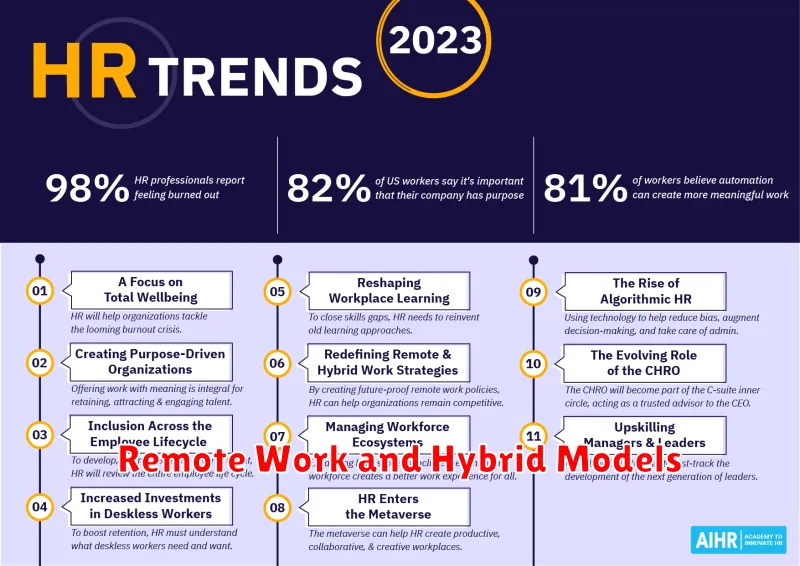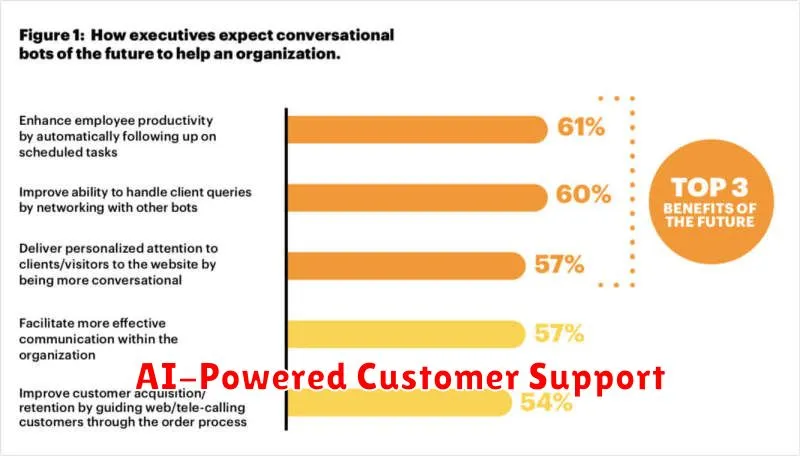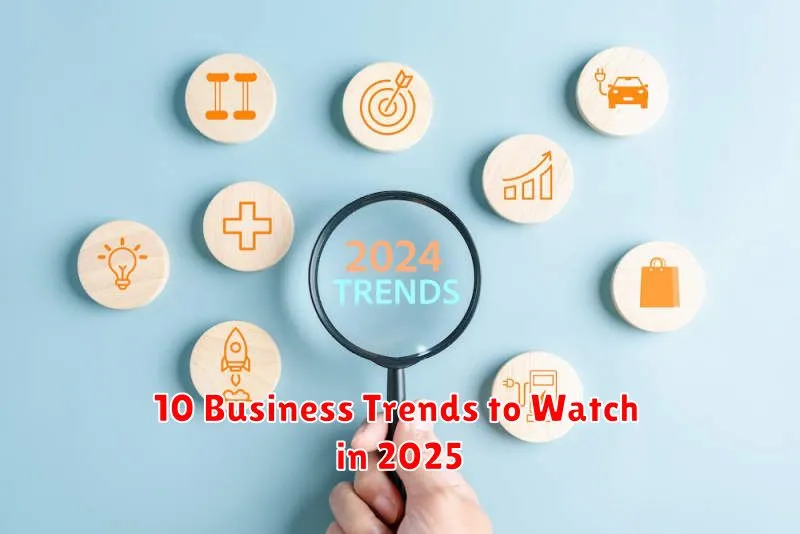The business landscape is constantly evolving, and staying ahead of the curve is crucial for success. In 2025, several key business trends are poised to reshape industries and redefine how companies operate. Understanding these emerging trends will be essential for businesses to thrive in the increasingly competitive market. This article explores 10 crucial business trends to watch in 2025, providing insights into the forces shaping the future of commerce, technology, and the global economy. From the rise of artificial intelligence and the metaverse to the increasing importance of sustainability and the changing dynamics of the workforce, these trends will have a profound impact on how businesses operate, innovate, and compete.
Keeping pace with these business trends will be paramount for business growth and success in 2025. This article will delve into the top 10 business trends, providing valuable insights for businesses seeking to adapt and capitalize on these emerging opportunities. By examining the future of business through the lens of these trends, businesses can gain a competitive edge, anticipate challenges, and position themselves for long-term success in the dynamic landscape of 2025 and beyond. These key trends encompass a wide range of areas, including technology, marketing, workforce dynamics, and sustainability, highlighting the interconnected nature of the modern business environment.
Why Tracking Trends Matters
In a rapidly evolving business landscape, staying ahead of the curve is crucial for success. Tracking trends provides valuable insights into emerging technologies, shifting consumer behavior, and competitive dynamics. This awareness empowers businesses to make informed decisions, adapt strategies proactively, and seize new opportunities.
Ignoring trends can lead to missed opportunities and even business failure. By monitoring trends, businesses can identify potential threats and disruptions early on, allowing them to mitigate risks and develop contingency plans. This proactive approach fosters resilience and enhances long-term sustainability.
Trend tracking also fuels innovation. By understanding emerging needs and preferences, businesses can develop innovative products, services, and marketing strategies that resonate with their target audience. This fosters a competitive advantage and drives business growth.
How to Apply Trends to Your Business
Staying competitive requires adapting to emerging trends. Careful analysis is crucial before implementing any changes. Consider your specific industry, target audience, and resources. Not every trend will be suitable for every business.
Start by prioritizing trends that align with your business goals. Conduct thorough research to understand the potential impact of each trend. Pilot testing new strategies on a smaller scale can help mitigate risks and allow for adjustments before full implementation.
Flexibility and adaptability are essential. The business landscape is constantly evolving, so be prepared to adjust your approach as needed. Continuously monitor the performance of implemented changes and be willing to iterate based on the results.
Remote Work and Hybrid Models

The shift towards remote work, significantly accelerated by the 2020 pandemic, is expected to become further ingrained by 2025. Flexibility and work-life balance remain strong drivers for employees, influencing company policies.
Hybrid models are anticipated to gain prominence, offering a blend of in-office and remote work. This approach aims to leverage the benefits of both, fostering collaboration and in-person connection while maintaining flexibility.
Companies will need to invest in robust technological infrastructure and communication tools to support remote and hybrid work arrangements effectively. Furthermore, redefining performance management and team dynamics for distributed teams will be crucial for sustained success.
AI-Powered Customer Support

Artificial intelligence is poised to revolutionize customer support in 2025. Businesses are increasingly adopting AI-powered solutions to enhance efficiency and customer satisfaction.
Key applications include chatbots for handling routine inquiries, virtual assistants providing personalized support, and AI-driven analytics to understand customer behavior and predict future needs. These tools offer 24/7 availability, reduced response times, and consistent service quality.
Furthermore, AI can analyze large datasets to identify trends and personalize customer interactions. This allows businesses to offer proactive support, anticipate customer issues, and deliver tailored solutions, ultimately leading to improved customer loyalty and retention.
Sustainable Business Practices

Consumers are increasingly holding businesses accountable for their environmental and social impact. This trend translates to a growing demand for sustainable products and services. Companies must adopt sustainable business practices to remain competitive and attract environmentally and socially conscious consumers.
Key areas of focus include reducing carbon emissions, minimizing waste, and sourcing ethical and sustainable materials. Implementing circular economy principles, focusing on reuse and recycling, will also be crucial.
Transparency is essential. Consumers expect businesses to be open about their sustainability efforts and demonstrate measurable progress. Companies that prioritize sustainability will not only enhance their brand reputation but also contribute to a more sustainable future.
Subscription-Based Services
The subscription model continues to gain momentum. Beyond the familiar realms of software and entertainment, we’re seeing its expansion into diverse sectors. Everything from clothing rentals and meal kits to fitness equipment and educational resources is adopting this recurring revenue model. This provides businesses with predictable income streams and fosters customer loyalty.
For consumers, subscriptions offer convenience and curated experiences. This trend is expected to accelerate in 2025, with an increasing focus on personalization and niche offerings tailored to individual needs and preferences.
Businesses looking to leverage this trend should focus on providing high value, exclusive content, and seamless user experiences. Flexibility and clear value propositions will be key to attracting and retaining subscribers in this competitive landscape.
Voice Search Optimization
With the rise of smart speakers and virtual assistants, voice search is rapidly transforming how consumers interact with technology. Optimizing for voice search is no longer optional but essential for businesses seeking to maintain visibility and reach their target audience. Voice queries tend to be longer and more conversational than text-based searches, focusing on question words like “how,” “what,” and “where.” This shift necessitates a change in keyword strategy, focusing on long-tail keywords and natural language phrases.
Businesses must adapt their content to answer these conversational queries directly and concisely. Structuring content with clear headings, using schema markup, and focusing on providing direct answers to commonly asked questions will be crucial for voice search success. Furthermore, optimizing for local search is paramount, as many voice searches are locally driven, seeking nearby businesses and services. Ensuring accurate and consistent business information across online directories is critical for capturing voice search traffic.
No-Code Tools
The rise of no-code tools is empowering individuals and businesses to develop software and applications without traditional coding skills. This democratization of software development is a significant trend to watch. No-code platforms provide intuitive visual interfaces and drag-and-drop functionalities, enabling users to build everything from simple websites and mobile apps to complex business applications and workflows.
This trend is fueled by the increasing demand for software solutions and the shortage of skilled developers. No-code tools offer a cost-effective and faster alternative to traditional development, allowing businesses to quickly adapt to changing market needs and innovate rapidly. Furthermore, no-code empowers citizen developers within organizations, fostering greater agility and reducing reliance on IT departments for smaller projects.
Key benefits of leveraging no-code tools include:
- Reduced development costs
- Faster time-to-market
- Increased agility and flexibility
- Empowerment of citizen developers
Hyper-Personalization in Marketing
Moving beyond basic segmentation, hyper-personalization leverages real-time data and AI to craft highly individualized customer experiences. This includes personalized product recommendations, targeted messaging, and custom-tailored offers delivered across various touchpoints.
Businesses are increasingly investing in sophisticated data analytics and AI-powered platforms to achieve this level of granular personalization. The goal is to enhance customer engagement, foster loyalty, and ultimately drive conversions by delivering precisely what each customer wants, when they want it.
Key benefits include improved customer satisfaction, increased sales, and higher return on marketing investment. However, navigating data privacy concerns and ensuring ethical data usage will be crucial for successful implementation.
Digital Product Expansion
The trend of expanding digital product offerings will continue to accelerate in 2025. Businesses are recognizing the importance of diversifying their digital portfolios to cater to evolving consumer needs and capture new market segments. This expansion encompasses various aspects, including introducing new digital products, enhancing existing ones with advanced features, and exploring innovative digital service models.
Key drivers behind this trend include the increasing adoption of digital technologies by consumers, the growing demand for personalized experiences, and the rise of new digital platforms. Businesses are leveraging data analytics and customer insights to identify opportunities for digital product innovation and expansion. This allows them to create targeted offerings that resonate with specific customer segments and enhance customer engagement.
Examples of digital product expansion include subscription-based services, personalized recommendations, and interactive digital content. Businesses across various industries, from retail and entertainment to healthcare and finance, are actively pursuing digital product expansion strategies to stay competitive and drive growth.
Micro-Influencer Marketing
Micro-influencers, individuals with a smaller but highly engaged audience, are becoming increasingly valuable marketing assets. Their niche focus and authentic connection with followers cultivate strong trust and drive higher conversion rates. Brands are recognizing the potency of these personalized recommendations, often surpassing the impact of macro-influencers.
This trend stems from growing consumer skepticism towards generic advertising. People are more likely to trust recommendations from individuals they feel a genuine connection with, even if their follower count isn’t in the millions. This shift allows for more targeted campaigns and better ROI for businesses willing to invest in these partnerships.

